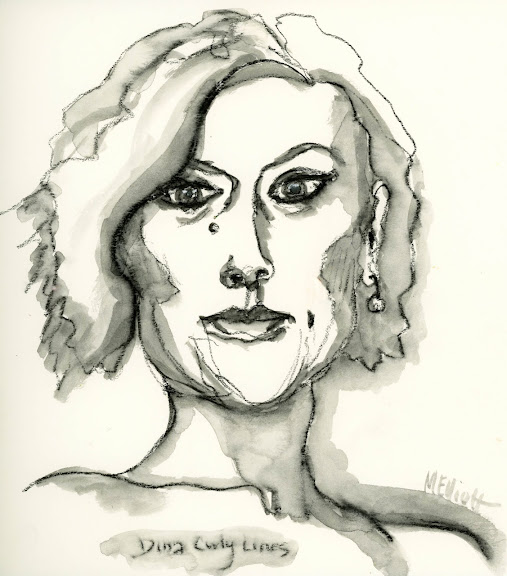That particular wall has been completely obscured by my neighbor's vine—it was planted to crawl up the wall on their side about 15 years ago, and has now grown up and over to carpet my side with dense leafiness, dark in the shadows and bright where the sun strikes it at the top. I'm thrilled—apart from the look of it, which I love, it's probably the only thing still holding up that section of wall, which was installed in 1948 and has become increasingly wobbly over the years as it has survived several large earthquakes. My dad had to shore up the portion of the wall on the other side of the yard with a couple of posts after the Northridge quake, but the vine on this side kept everything standing nicely.
I was going to just pick a handful of zinnias, stick them in an attractive vase, and paint a watercolor still life; but after my experience on Tuesday with the Van Gogh immersive experience, I had the impulse to try painting a landscape with acrylics, which I have yet to do since taking them up this year. So I taped off a piece of watercolor paper and gave it a shot.
I'm actually pretty happy with it—the hedge-covered wall has a nice solidity enlivened by its highlights, and the zinnias feel authentic. The tree in my neighbor's yard that peeks over the wall was initially too prominent as a mere background, so I washed over it with a blue-white glaze to back it down, and now it feels like about the right intensity. The brown at the bottom is the color of my lawn after a mostly rainless summer, but it provides a nice space to throw in a few shadows from the overhanging bits of zinnia border.
"Zinnia Border"—Vincent it's not, but I thank him for the inspiration to try, and it makes for a big finish for the month's prompts. Acrylics on Fluid 140-lb. coldpress watercolor paper, 16x12 inches.






